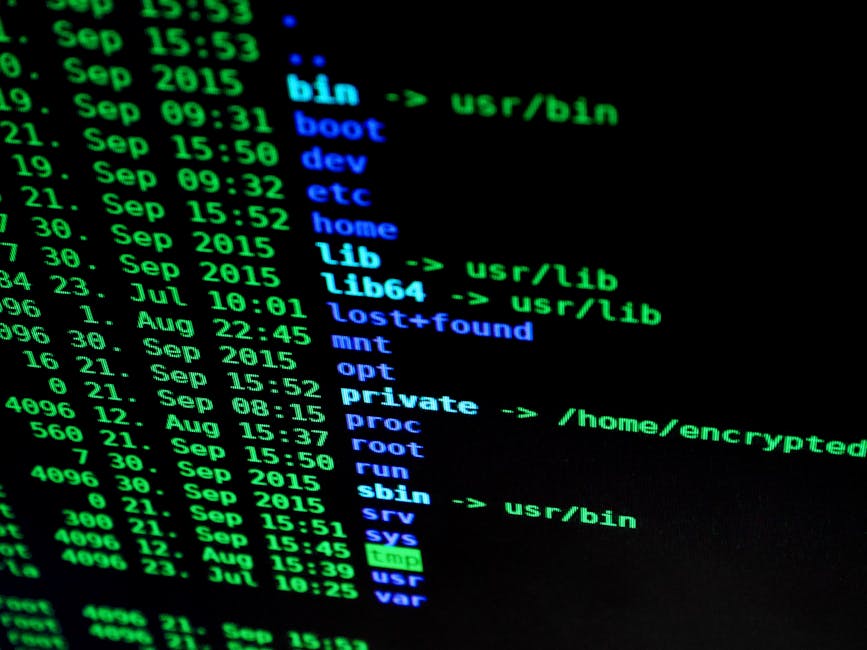The Role of Firewalls in Cybersecurity
When we think about cybersecurity, one of the first tools that come to mind is a firewall. Firewalls have been a cornerstone of cybersecurity measures for decades, playing a crucial role in protecting networks and systems from various threats. But what exactly is the role of firewalls in cybersecurity? How do they work, and why are they essential in today’s digital landscape? In this comprehensive guide, we will delve into the world of firewalls, exploring their significance, functionality, and impact on cybersecurity.
The Basics of Firewalls

Firewalls act as a barrier between a trusted internal network and untrusted external networks, such as the internet. They monitor and control incoming and outgoing network traffic based on predetermined security rules. Firewalls can be implemented in various forms, including hardware appliances, software programs, or cloud-based services.
One of the primary functions of a firewall is to examine data packets entering or exiting a network and determine whether to allow or block them based on a set of predefined rules. These rules can be configured to filter traffic based on IP addresses, port numbers, protocols, or specific keywords. By enforcing these rules, firewalls help prevent unauthorized access, malicious attacks, and data breaches.
Types of Firewalls

There are several types of firewalls, each with its unique characteristics and capabilities:
1. Packet Filtering Firewalls
Packet filtering firewalls inspect individual packets of data as they pass through the network. They make decisions based on predefined rules, such as allowing or blocking packets based on source or destination IP addresses, port numbers, or protocols. While packet filtering firewalls are effective at screening traffic, they may not provide advanced security features.
2. Stateful Inspection Firewalls
Stateful inspection firewalls not only examine individual packets but also keep track of the state of active connections. By maintaining context about the ongoing sessions, these firewalls can make more informed decisions about allowing or blocking traffic. Stateful inspection firewalls offer improved security by considering the entire communication flow, not just individual packets.
3. Proxy Firewalls
Proxy firewalls act as intermediaries between internal and external networks, handling all incoming and outgoing traffic on behalf of the users. They establish a secure connection with external servers, inspecting and filtering data before forwarding it to the intended recipients. Proxy firewalls provide an additional layer of security by masking internal IP addresses and enhancing privacy.
Importance of Firewalls in Cybersecurity

Firewalls play a critical role in safeguarding networks and systems from a wide range of cyber threats. Here are some key reasons why firewalls are essential in cybersecurity:
1. Network Security
Firewalls form the first line of defense against unauthorized access to a network. By filtering incoming and outgoing traffic, firewalls prevent malicious actors from infiltrating the network and compromising sensitive data. They help detect and block intrusion attempts, reducing the risk of cyber attacks.
2. Access Control
Firewalls enable organizations to control access to their network resources based on predefined security policies. By setting rules for permitted and restricted traffic, organizations can limit exposure to potential threats and enforce compliance with security standards. Firewalls help manage user permissions and restrict unauthorized activities within the network.
3. Application Security
Firewalls can provide application-layer security by inspecting and filtering traffic at the application level. They can identify and block suspicious activities within specific applications, such as web browsers or email clients. By monitoring application traffic, firewalls help prevent malware infections, data leaks, and other application-based attacks.
4. Threat Detection and Prevention
Firewalls incorporate threat intelligence and signature-based detection mechanisms to identify known threats and patterns of malicious behavior. They can block traffic from known malicious IP addresses, domains, or signatures, mitigating the risk of cyber attacks. Firewalls also support intrusion detection and prevention systems to monitor and respond to suspicious activity in real-time.
Challenges and Limitations of Firewalls

While firewalls are indispensable tools in cybersecurity, they have certain limitations and challenges that organizations need to consider:
1. Evolving Threat Landscape
The cybersecurity threat landscape is constantly evolving, with cybercriminals developing sophisticated attack techniques to bypass traditional security measures. Firewalls may struggle to detect advanced threats like zero-day exploits, polymorphic malware, or insider threats. Organizations need to complement firewalls with advanced security solutions to address these emerging threats.
2. Encryption and Encrypted Traffic
Encrypted traffic poses a challenge for firewalls, as they cannot inspect the contents of encrypted data packets without decrypting them first. While SSL/TLS decryption can enable firewalls to analyze encrypted traffic, it may introduce performance overhead and privacy concerns. Organizations must balance security and privacy considerations when implementing SSL/TLS decryption for enhanced threat detection.
3. Complexity of Network Architectures
Modern networks are becoming increasingly complex, with distributed environments, cloud services, and mobile devices creating new challenges for firewall management. Traditional firewalls may struggle to adapt to dynamic network architectures and provide comprehensive security coverage across all network endpoints. Organizations should explore next-generation firewall solutions that offer more flexibility and scalability in diverse network environments.
Future Trends in Firewall Technology
As cybersecurity threats continue to evolve, firewall technology is also advancing to meet the demands of the digital age. Here are some emerging trends in firewall technology:
1. Cloud-Based Firewalls
Cloud-based firewalls are becoming increasingly popular, especially as organizations migrate their infrastructure to cloud environments. These firewalls provide scalable and flexible security solutions that can protect cloud workloads, applications, and data. Cloud-based firewalls offer centralized management, real-time threat detection, and seamless integration with cloud platforms.
2. Zero Trust Architecture
Zero Trust Architecture (ZTA) is a security model that assumes no implicit trust within a network, even among internal users or devices. Firewalls play a crucial role in implementing ZTA by enforcing strict access controls, inspecting all traffic regardless of its source, and continuously verifying user identities. ZTA focuses on least privilege access, micro-segmentation, and continuous monitoring to enhance network security.
3. Artificial Intelligence and Machine Learning
Artificial Intelligence (AI) and Machine Learning (ML) technologies are being integrated into firewalls to enhance threat detection and response capabilities. AI-powered firewalls can analyze vast amounts of data, identify patterns of suspicious behavior, and automate security controls in real-time. By leveraging AI and ML, firewalls can adapt to evolving threats and improve overall cybersecurity posture.
Expert Opinions
According to cybersecurity experts, firewalls remain a foundational element of cybersecurity strategies, providing essential protection against a wide range of threats. Dr. Sarah Johnson, a cybersecurity analyst, states, “Firewalls serve as the first line of defense in network security, filtering traffic and preventing unauthorized access. Organizations should regularly update their firewall rules and configurations to adapt to changing threat landscapes.”
Common Misconceptions
One common misconception about firewalls is that they provide complete protection against all cyber threats. While firewalls are crucial for network security, they cannot defend against every type of attack, especially those targeting application vulnerabilities or social engineering tactics. Organizations should implement a layered security approach, combining firewalls with other security measures like antivirus software, intrusion detection systems, and security awareness training.
Conclusion
Firewalls play a pivotal role in cybersecurity by securing networks, controlling access, and detecting threats in real-time. As organizations continue to face evolving cyber threats, firewalls will remain essential tools for protecting digital assets and ensuring data confidentiality. By understanding the significance of firewalls in cybersecurity and embracing emerging technologies, organizations can enhance their overall security posture and mitigate risks effectively.
To wrap things up, firewalls serve as the gatekeepers of network security, standing guard against cyber threats and safeguarding critical assets. As the digital landscape evolves, the role of firewalls in cybersecurity will continue to evolve, adapting to new challenges and technologies. By staying informed, proactive, and vigilant, organizations can leverage firewalls to fortify their defenses and stay ahead of cyber adversaries.




